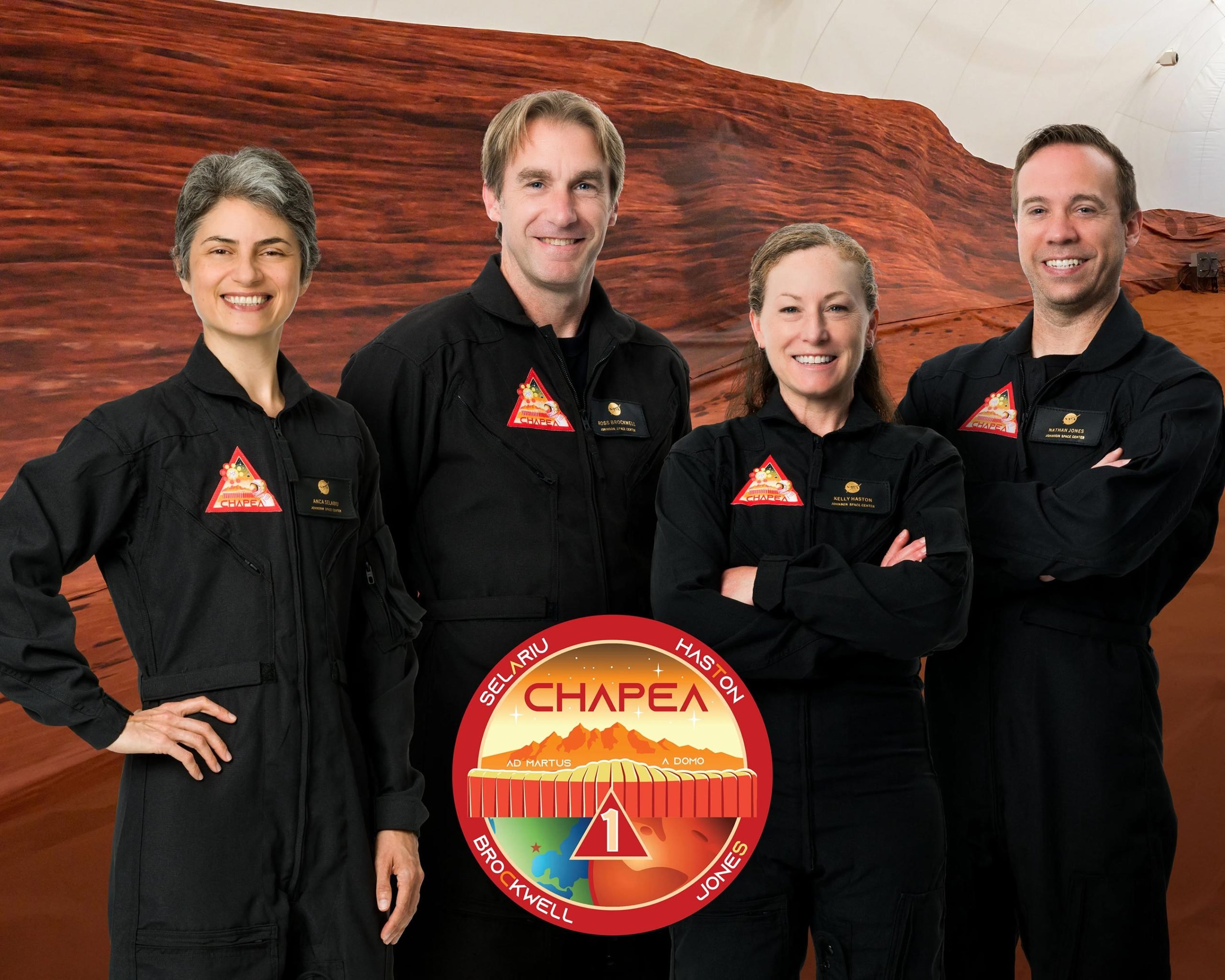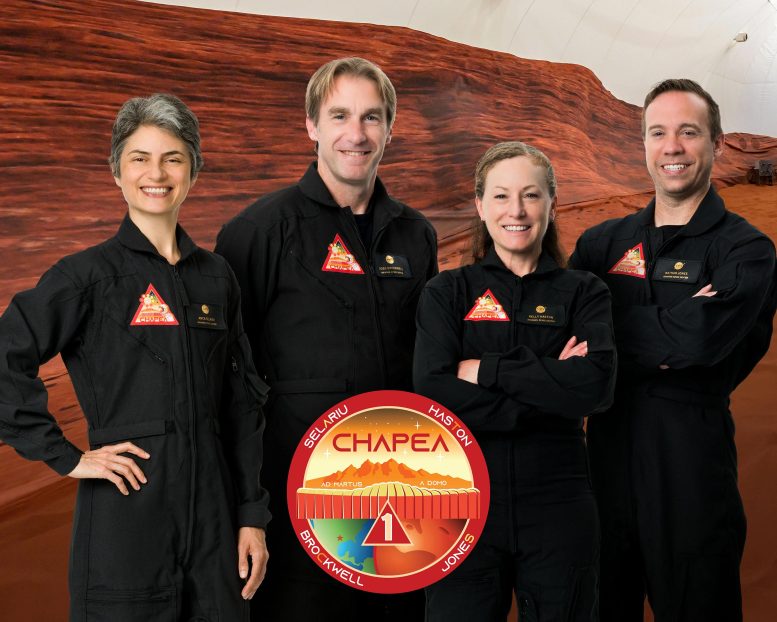
Four crew members completed a year-long Mars simulation under NASA’s CHAPEA program, testing human resilience in a 3D-printed habitat to gather data for future Mars missions, with more simulations planned. Credit: NASA
NASAThe inaugural CHAPEA crew completed a year-long simulated Mars mission at the Johnson Space Center, in which four crew members lived in a 3D-printed habitat to assess the health and performance of people in isolation and confinement.
The simulation, part of NASA’s broader Artemis campaign, is intended to prepare for future human missions to Mars. Additional analog missions are planned through 2025 to expand the research data.
The inaugural CHAPEA (Crew Health and Performance Exploration Analog) crew is “back on Earth” after leaving their simulated Martian habitat at NASA’s Johnson Space Center in Houston on July 6. The first of three simulated missions, CHAPEA Mission 1, was designed to help scientists, engineers and mission planners better understand how living on another world can affect human health and performance.
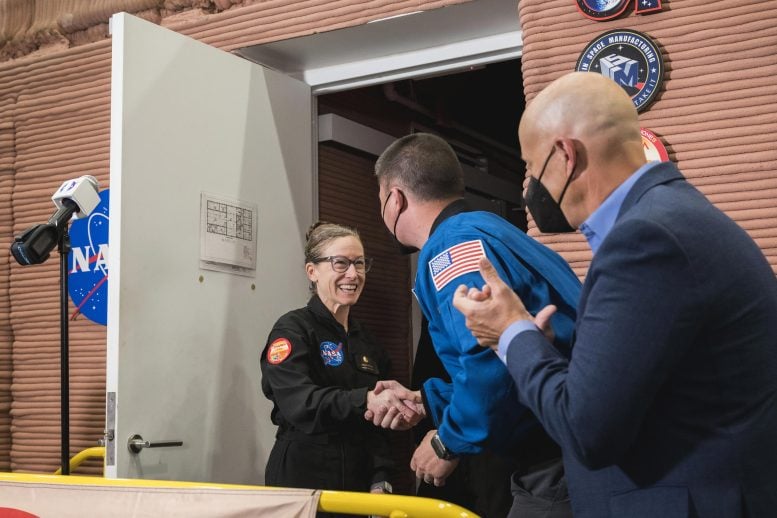
NASA’s CHAPEA (Crew Health and Performance Exploration Analog) crewmember Kelly Haston greets Deputy Director of Flight Operations Kjell Lindgren and Johnson Space Center Deputy Director Stephen Koerner at the habitat door. Credit: NASA/Josh Valcarcel
The CHAPEA Mission 1 Crew
Kelly Haston, Commander, Ross Brockwell, Flight Engineer, Nathan Jones, Medical Officer, and Anca Selariu, Science Officer, lived and worked in a remote, 1,700-square-foot (157-square-meter) 3D-printed habitat to support research into human health and performance in preparation for future missions to Mars.
“Congratulations to the crew of CHAPEA Mission 1 for completing a year in a Mars-simulated environment,” said NASA Administrator Bill Nelson. “Through the Artemis missions, we will use what we learn on and around the Moon to take the next big step: sending the first astronauts to Mars. The CHAPEA missions are critical to developing the knowledge and tools people will need to one day live and work on the Red Planet.”
The crew left the habitat and returned to the arms of family and friends after a 378-day simulated mission to the surface of Mars that began on June 25, 2023.
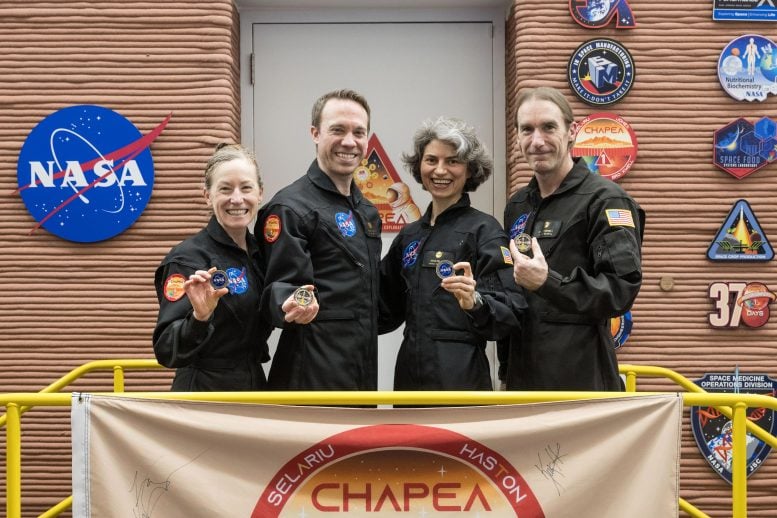
The CHAPEA crew leaves their simulated Mars mission on July 6, 2024, at NASA’s Johnson Space Center in Houston. From left: Kelly Haston, Nathan Jones, Anca Selariu and Ross Brockwell. Credit: NASA/Josh Valcarcel
The rigor of simulated Mars missions
This high-fidelity simulation involved the crew performing a variety of mission objectives, including simulated “marswalks,” robotic operations, habitat maintenance, exercises, and crop growth. The crew also encountered intentional environmental stressors in their habitat, such as limited resources, isolation, and confinement. Over the next two weeks, the volunteers will complete post-mission data collection activities before returning home.
“We’ve planned the last 378 days with many of the challenges that crews on Mars can face, and this crew has dedicated their lives during that time to achieving these unprecedented operational objectives,” said CHAPEA Principal Investigator Grace Douglas. “I look forward to diving into the data we’ve collected, in preparation for CHAPEA Mission 2 and ultimately a human presence on Mars.”
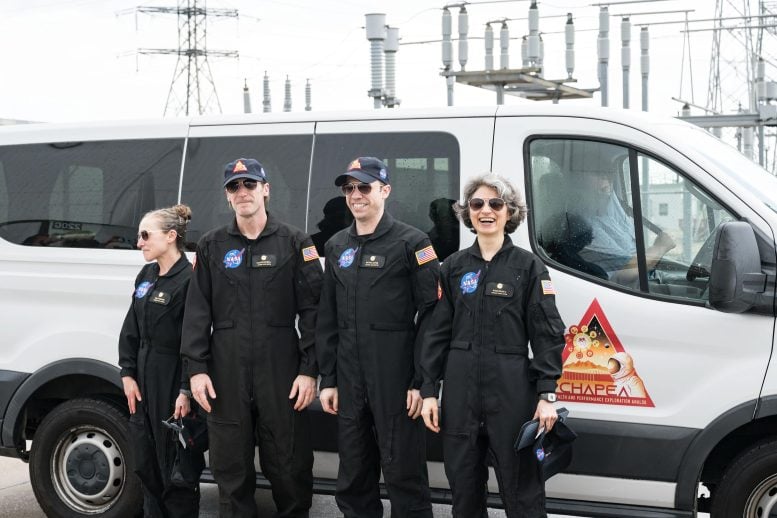
The CHAPEA crew is “back on Earth” after their 378-day mission in the simulated Martian habitat. Credit: NASA/Josh Valcarcel
The broader impact of CHAPEA on space exploration
While NASA works to establish a long-term presence for scientific discovery and exploration on the Moon through the Artemis campaign, analog missions such as CHAPEA provide scientific data to validate systems and develop technology solutions for future missions to Mars.
Two additional one-year CHAPEA missions are planned, with the next expected to launch in 2025. Subsequent missions will be nearly identical, allowing researchers to collect data from more participants to expand the dataset and provide a broader perspective on the impact of realistic Martian resource constraints, isolation and confinement on human health and performance.
Expanding the scope of insulation research
NASA has several other avenues for collecting isolation research, including the Human Exploration Research Analog, Antarctica and other analogs, as well as manned spaceflight missions to the International Space Station to ensure that key research goals can be achieved in support of future human missions to the Moon and Mars.
The simulated CHAPEA missions are unique in that they test the impact of prolonged isolation and confinement with the addition of Mars-realistic time delays of communications with Earth – up to 44 minutes round trip – along with the resource constraints relevant to Mars, including a more limited food system that can be supported on the space station and other analogues.
Watch the ceremony where the crew leaves their habitat:
The four volunteers who have been living and working on NASA’s first year-long simulated Mars habitat mission will leave their ground-based home on Saturday, July 6. The first Crew Health and Performance Exploration Analog (CHAPEA) mission launched into the 3D-printed habitat on June 25, 2023, with crew members Kelly Haston, Anca Selariu, Ross Brockwell and Nathan Jones. For more than a year, the crew simulated Mars missions, including “Marswalks,” grew and harvested a variety of vegetables to supplement their nonperishable food, maintained their equipment and habitat, and operated amid additional stressors a Mars crew will experience, including communication delays with Earth, limited resources and isolation. Credit: NASA Johnson
Through NASA’s Artemis campaign, the agency will lay the foundation for long-term scientific exploration on the moon, land the first woman, the first person of color, and the first international astronaut on the lunar surface, and prepare for human expeditions to Mars for the benefit of all.
